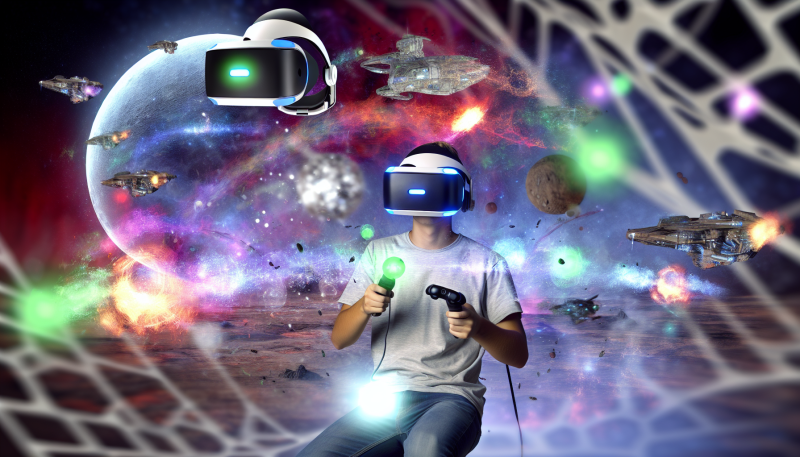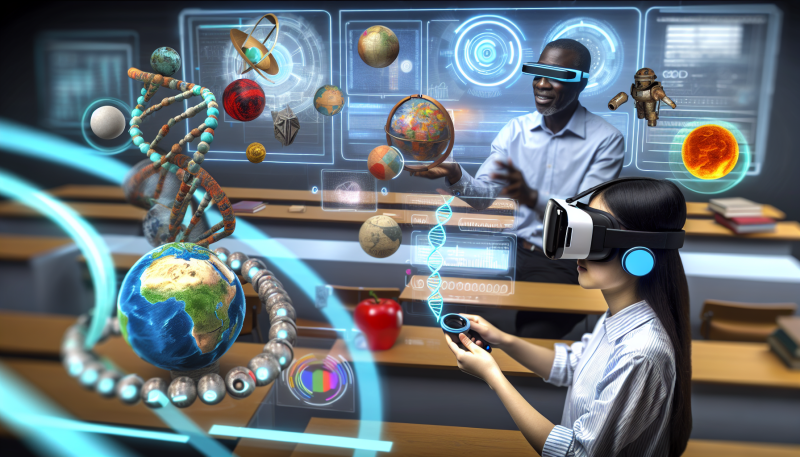In recent years, the rise of immersive experiences has transformed the way we interact with our daily environments. Augmented reality (AR) technology plays a significant role in this shift, blending digital elements with the physical world. With smartphones and smart glasses becoming more accessible, individuals can now experience a new layer of reality that enhances everyday activities.
From shopping to education, AR applications are changing how we engage with various aspects of our lives. For instance, in the retail sector, stores are using AR to allow customers to visualize products in their own homes before making a purchase. This capability not only boosts consumer confidence but also creates a more personalized shopping experience. In education, students can explore complex concepts by interacting with 3D models and simulations that make learning more engaging and effective.
Moreover, social media platforms are integrating AR features, enabling users to create and share engaging content. Filters and effects that transform faces and surroundings are now commonplace, encouraging creativity and self-expression. These immersive experiences bridge the gap between the digital world and personal interactions, fostering a sense of community among users who share similar interests and experiences.
As technology continues to evolve, the potential for augmented reality in daily life will expand further. With advancements in artificial intelligence and mobile computing, we can expect more sophisticated applications that seamlessly integrate into our routines. This growing trend will not only redefine how we interact with the world around us but also reshape our understanding of reality itself.
Augmented Reality in Education and Training
Augmented Reality (AR) is transforming the way we approach education and training. With AR, learners can experience immersive environments that enhance understanding and retention. Imagine a history lesson where students can walk through ancient civilizations or a biology class where they can explore the human body in 3D. This technology makes learning more engaging and interactive, allowing students to visualize complex concepts in a way that traditional textbooks cannot.
In vocational training, AR is proving to be a game changer. Trainees can practice their skills in a simulated environment, where mistakes don't have real-world consequences. For example, engineers can use AR to overlay digital blueprints on real machinery, helping them understand and troubleshoot issues more easily. Such hands-on experiences not only build confidence but also ensure that individuals are better prepared for their actual jobs.
AR also supports collaborative learning. Students can work together on projects, sharing their AR experiences in real time regardless of their physical location. This fosters teamwork and allows learners to gain insights from each other, enriching the educational experience. With the continued advancement of AR technology, the opportunities for collaborative and remote learning are becoming more accessible to educational institutions around the globe.
Furthermore, AR makes learning more personalized. Through adaptive technologies, AR can tailor experiences to meet individual learning styles and paces. For instance, students struggling with specific topics can receive immediate feedback and additional resources, ensuring that no one is left behind. As AR continues to evolve, its applications in education and training are likely to expand, opening doors to new ways of acquiring knowledge that are both effective and enjoyable.
Transforming Retail with Virtual Try-Ons
Virtual try-ons are revolutionizing the retail experience by allowing customers to see how products will look on them without ever having to step into a fitting room. Through the use of augmented reality (AR), shoppers can now digitally try on clothing, accessories, and even makeup using their smartphones or in-store kiosks. This technology not only adds a layer of convenience but also enhances customer engagement, making online shopping more interactive and enjoyable.
With virtual try-ons, the frustration of returning ill-fitting items can be greatly reduced. Customers can visualize products on themselves in real-time, helping them to make more informed purchasing decisions. Retailers are already seeing a boost in conversion rates as shoppers feel more confident in their choices. Brands like Warby Parker and Sephora have successfully integrated AR, allowing users to virtually try on glasses and makeup, respectively, thus fostering a seamless shopping experience.
Moreover, virtual try-ons are not just beneficial for customers; they also provide valuable insights for retailers. By analyzing customer interactions with AR features, brands can gather data on popular styles, colors, and preferences. This information can help in tailoring inventory, marketing strategies, and even product development. As this technology continues to evolve, it is likely that we will see even more innovative applications that enhance the retail landscape.
As consumers become increasingly accustomed to the digital shopping experience, the demand for virtual try-ons will only grow. Retailers that embrace this trend not only show their commitment to customer satisfaction but also position themselves ahead of the competition. The combination of convenience, engagement, and data-driven insights makes virtual try-ons a game changer in the retail industry.
Enhancing Healthcare with Augmented Solutions
Augmented reality (AR) is reshaping the healthcare landscape, providing transformative solutions that enhance patient care and streamline medical processes. By overlaying digital information onto the real world, AR technology allows medical professionals to visualize complex data in a more intuitive way. Surgeons, for instance, can now use AR to project 3D images of a patient's anatomy directly onto their bodies during procedures, improving accuracy and outcomes.
Training and education in medical fields have also benefited from augmented solutions. Medical students can practice surgical techniques in a risk-free environment using AR simulations that mimic real-life scenarios. This hands-on experience not only builds their confidence but also allows them to learn at their own pace, ultimately leading to better-prepared healthcare providers.
Patient engagement is another crucial area where AR is making a significant impact. By offering interactive visualizations of treatment plans, patients can better understand their conditions and the procedures they may undergo. This transparency fosters a stronger patient-provider relationship, encouraging adherence to treatment and promoting shared decision-making.
Furthermore, AR can assist in remote consultations by providing doctors with real-time data and visuals during virtual appointments. This not only bridges the gap between healthcare providers and patients but also expands access to quality care, especially in underserved areas. As technology continues to evolve, the integration of augmented reality in healthcare promises to create a more efficient, informed, and patient-centered system.



